Ziyi Chen
Zeroth-Order Methods for Stochastic Nonconvex Nonsmooth Composite Optimization
Oct 06, 2025Abstract:This work aims to solve a stochastic nonconvex nonsmooth composite optimization problem. Previous works on composite optimization problem requires the major part to satisfy Lipschitz smoothness or some relaxed smoothness conditions, which excludes some machine learning examples such as regularized ReLU network and sparse support matrix machine. In this work, we focus on stochastic nonconvex composite optimization problem without any smoothness assumptions. In particular, we propose two new notions of approximate stationary points for such optimization problem and obtain finite-time convergence results of two zeroth-order algorithms to these two approximate stationary points respectively. Finally, we demonstrate that these algorithms are effective using numerical experiments.
Trade-off in Estimating the Number of Byzantine Clients in Federated Learning
Oct 06, 2025

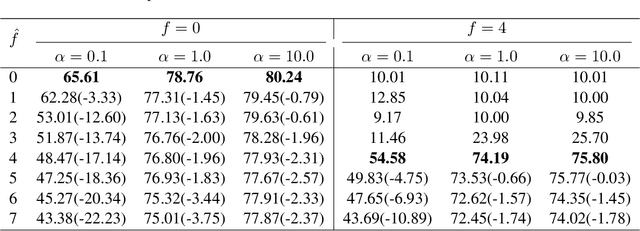

Abstract:Federated learning has attracted increasing attention at recent large-scale optimization and machine learning research and applications, but is also vulnerable to Byzantine clients that can send any erroneous signals. Robust aggregators are commonly used to resist Byzantine clients. This usually requires to estimate the unknown number $f$ of Byzantine clients, and thus accordingly select the aggregators with proper degree of robustness (i.e., the maximum number $\hat{f}$ of Byzantine clients allowed by the aggregator). Such an estimation should have important effect on the performance, which has not been systematically studied to our knowledge. This work will fill in the gap by theoretically analyzing the worst-case error of aggregators as well as its induced federated learning algorithm for any cases of $\hat{f}$ and $f$. Specifically, we will show that underestimation ($\hat{f}<f$) can lead to arbitrarily poor performance for both aggregators and federated learning. For non-underestimation ($\hat{f}\ge f$), we have proved optimal lower and upper bounds of the same order on the errors of both aggregators and federated learning. All these optimal bounds are proportional to $\hat{f}/(n-f-\hat{f})$ with $n$ clients, which monotonically increases with larger $\hat{f}$. This indicates a fundamental trade-off: while an aggregator with a larger robustness degree $\hat{f}$ can solve federated learning problems of wider range $f\in [0,\hat{f}]$, the performance can deteriorate when there are actually fewer or even no Byzantine clients (i.e., $f\in [0,\hat{f})$).
Achieve Performatively Optimal Policy for Performative Reinforcement Learning
Oct 06, 2025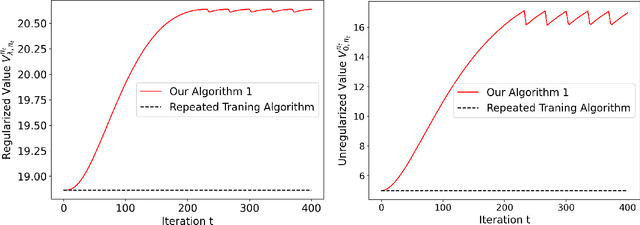
Abstract:Performative reinforcement learning is an emerging dynamical decision making framework, which extends reinforcement learning to the common applications where the agent's policy can change the environmental dynamics. Existing works on performative reinforcement learning only aim at a performatively stable (PS) policy that maximizes an approximate value function. However, there is a provably positive constant gap between the PS policy and the desired performatively optimal (PO) policy that maximizes the original value function. In contrast, this work proposes a zeroth-order Frank-Wolfe algorithm (0-FW) algorithm with a zeroth-order approximation of the performative policy gradient in the Frank-Wolfe framework, and obtains \textbf{the first polynomial-time convergence to the desired PO} policy under the standard regularizer dominance condition. For the convergence analysis, we prove two important properties of the nonconvex value function. First, when the policy regularizer dominates the environmental shift, the value function satisfies a certain gradient dominance property, so that any stationary point (not PS) of the value function is a desired PO. Second, though the value function has unbounded gradient, we prove that all the sufficiently stationary points lie in a convex and compact policy subspace $\Pi_{\Delta}$, where the policy value has a constant lower bound $\Delta>0$ and thus the gradient becomes bounded and Lipschitz continuous. Experimental results also demonstrate that our 0-FW algorithm is more effective than the existing algorithms in finding the desired PO policy.
Rectified Robust Policy Optimization for Model-Uncertain Constrained Reinforcement Learning without Strong Duality
Aug 24, 2025

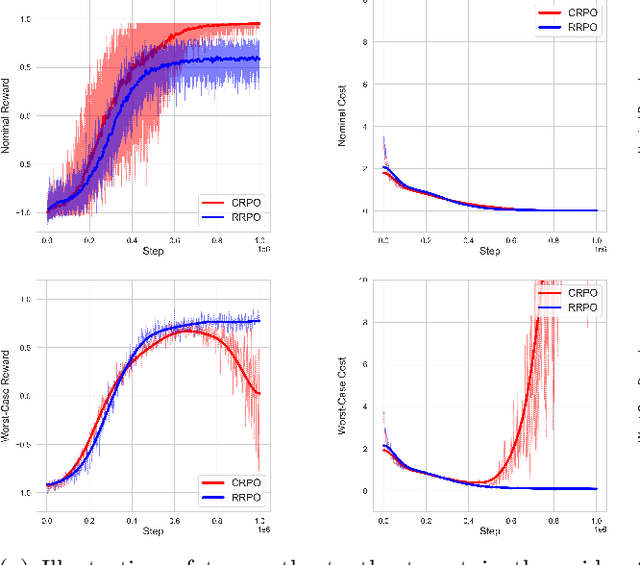

Abstract:The goal of robust constrained reinforcement learning (RL) is to optimize an agent's performance under the worst-case model uncertainty while satisfying safety or resource constraints. In this paper, we demonstrate that strong duality does not generally hold in robust constrained RL, indicating that traditional primal-dual methods may fail to find optimal feasible policies. To overcome this limitation, we propose a novel primal-only algorithm called Rectified Robust Policy Optimization (RRPO), which operates directly on the primal problem without relying on dual formulations. We provide theoretical convergence guarantees under mild regularity assumptions, showing convergence to an approximately optimal feasible policy with iteration complexity matching the best-known lower bound when the uncertainty set diameter is controlled in a specific level. Empirical results in a grid-world environment validate the effectiveness of our approach, demonstrating that RRPO achieves robust and safe performance under model uncertainties while the non-robust method can violate the worst-case safety constraints.
A Topic Modeling Analysis of Stigma Dimensions, Social, and Related Behavioral Circumstances in Clinical Notes Among Patients with HIV
Jun 10, 2025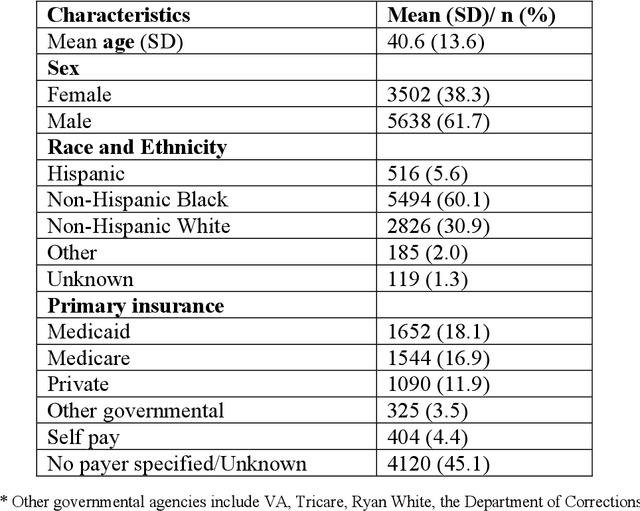
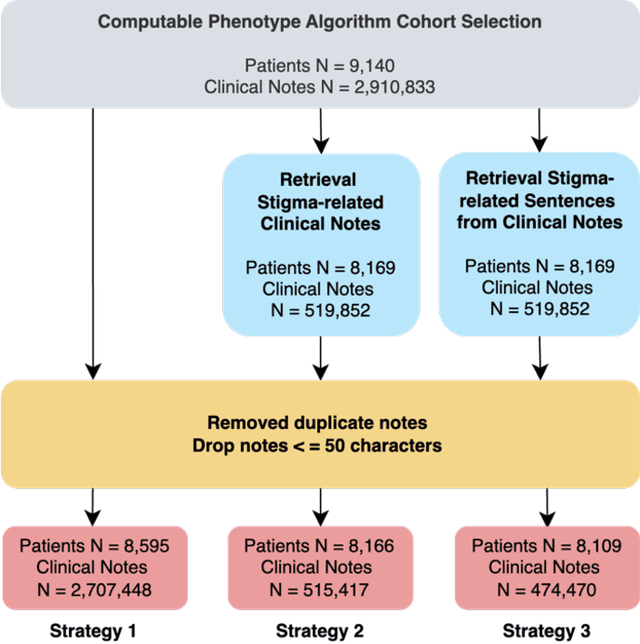
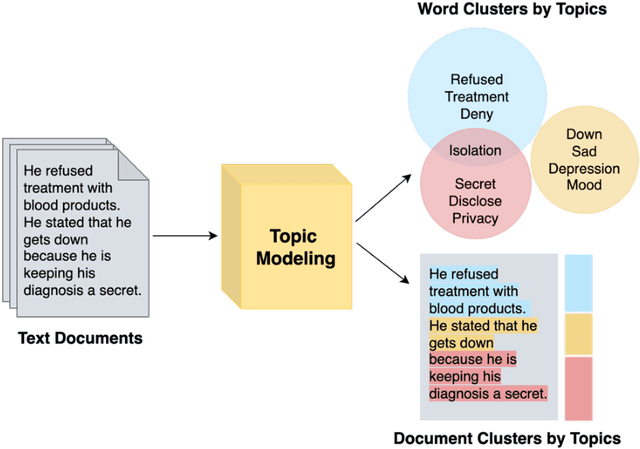
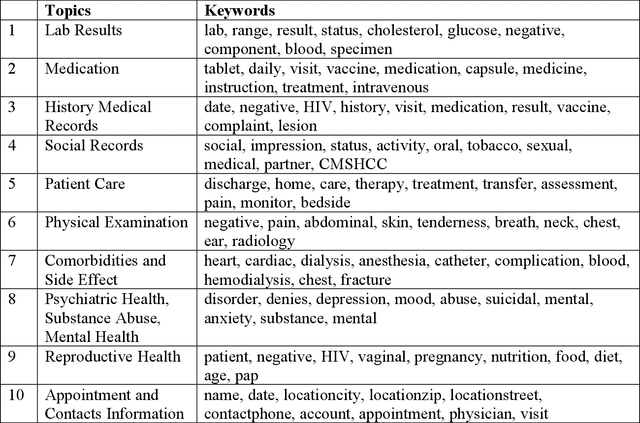
Abstract:Objective: To characterize stigma dimensions, social, and related behavioral circumstances in people living with HIV (PLWHs) seeking care, using natural language processing methods applied to a large collection of electronic health record (EHR) clinical notes from a large integrated health system in the southeast United States. Methods: We identified 9,140 cohort of PLWHs from the UF Health IDR and performed topic modeling analysis using Latent Dirichlet Allocation (LDA) to uncover stigma dimensions, social, and related behavioral circumstances. Domain experts created a seed list of HIV-related stigma keywords, then applied a snowball strategy to iteratively review notes for additional terms until saturation was reached. To identify more target topics, we tested three keyword-based filtering strategies. Domain experts manually reviewed the detected topics using the prevalent terms and key discussion topics. Word frequency analysis was used to highlight the prevalent terms associated with each topic. In addition, we conducted topic variation analysis among subgroups to examine differences across age and sex-specific demographics. Results and Conclusion: Topic modeling on sentences containing at least one keyword uncovered a wide range of topic themes associated with HIV-related stigma, social, and related behaviors circumstances, including "Mental Health Concern and Stigma", "Social Support and Engagement", "Limited Healthcare Access and Severe Illness", "Treatment Refusal and Isolation" and so on. Topic variation analysis across age subgroups revealed differences. Extracting and understanding the HIV-related stigma dimensions, social, and related behavioral circumstances from EHR clinical notes enables scalable, time-efficient assessment, overcoming the limitations of traditional questionnaires and improving patient outcomes.
Natural Language Generation in Healthcare: A Review of Methods and Applications
May 07, 2025Abstract:Natural language generation (NLG) is the key technology to achieve generative artificial intelligence (AI). With the breakthroughs in large language models (LLMs), NLG has been widely used in various medical applications, demonstrating the potential to enhance clinical workflows, support clinical decision-making, and improve clinical documentation. Heterogeneous and diverse medical data modalities, such as medical text, images, and knowledge bases, are utilized in NLG. Researchers have proposed many generative models and applied them in a number of healthcare applications. There is a need for a comprehensive review of NLG methods and applications in the medical domain. In this study, we systematically reviewed 113 scientific publications from a total of 3,988 NLG-related articles identified using a literature search, focusing on data modality, model architecture, clinical applications, and evaluation methods. Following PRISMA (Preferred Reporting Items for Systematic reviews and Meta-Analyses) guidelines, we categorize key methods, identify clinical applications, and assess their capabilities, limitations, and emerging challenges. This timely review covers the key NLG technologies and medical applications and provides valuable insights for future studies to leverage NLG to transform medical discovery and healthcare.
EasyGenNet: An Efficient Framework for Audio-Driven Gesture Video Generation Based on Diffusion Model
Apr 11, 2025Abstract:Audio-driven cospeech video generation typically involves two stages: speech-to-gesture and gesture-to-video. While significant advances have been made in speech-to-gesture generation, synthesizing natural expressions and gestures remains challenging in gesture-to-video systems. In order to improve the generation effect, previous works adopted complex input and training strategies and required a large amount of data sets for pre-training, which brought inconvenience to practical applications. We propose a simple one-stage training method and a temporal inference method based on a diffusion model to synthesize realistic and continuous gesture videos without the need for additional training of temporal modules.The entire model makes use of existing pre-trained weights, and only a few thousand frames of data are needed for each character at a time to complete fine-tuning. Built upon the video generator, we introduce a new audio-to-video pipeline to synthesize co-speech videos, using 2D human skeleton as the intermediate motion representation. Our experiments show that our method outperforms existing GAN-based and diffusion-based methods.
Data-free Knowledge Distillation with Diffusion Models
Apr 01, 2025Abstract:Recently Data-Free Knowledge Distillation (DFKD) has garnered attention and can transfer knowledge from a teacher neural network to a student neural network without requiring any access to training data. Although diffusion models are adept at synthesizing high-fidelity photorealistic images across various domains, existing methods cannot be easiliy implemented to DFKD. To bridge that gap, this paper proposes a novel approach based on diffusion models, DiffDFKD. Specifically, DiffDFKD involves targeted optimizations in two key areas. Firstly, DiffDFKD utilizes valuable information from teacher models to guide the pre-trained diffusion models' data synthesis, generating datasets that mirror the training data distribution and effectively bridge domain gaps. Secondly, to reduce computational burdens, DiffDFKD introduces Latent CutMix Augmentation, an efficient technique, to enhance the diversity of diffusion model-generated images for DFKD while preserving key attributes for effective knowledge transfer. Extensive experiments validate the efficacy of DiffDFKD, yielding state-of-the-art results exceeding existing DFKD approaches. We release our code at https://github.com/xhqi0109/DiffDFKD.
SyncDiff: Diffusion-based Talking Head Synthesis with Bottlenecked Temporal Visual Prior for Improved Synchronization
Mar 17, 2025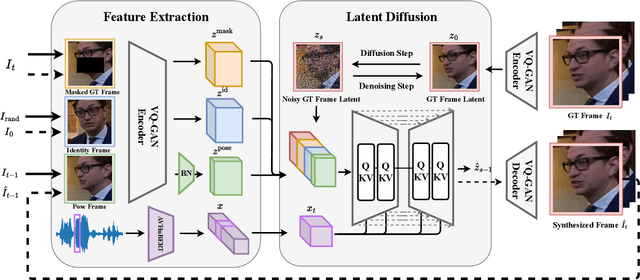
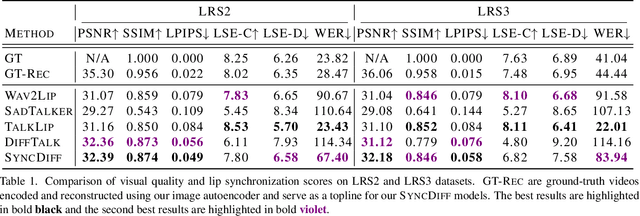

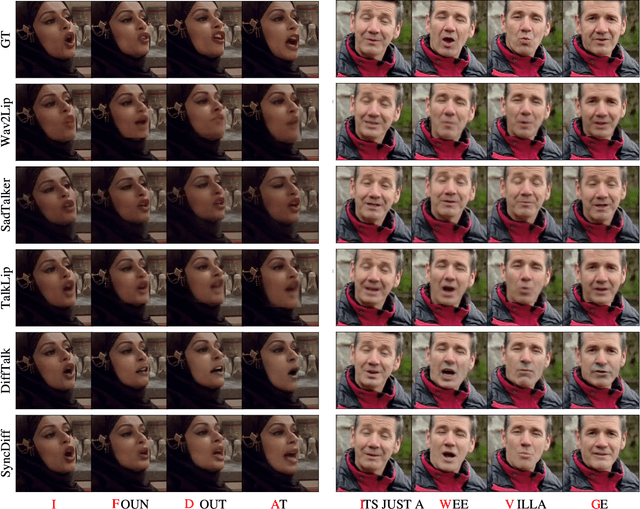
Abstract:Talking head synthesis, also known as speech-to-lip synthesis, reconstructs the facial motions that align with the given audio tracks. The synthesized videos are evaluated on mainly two aspects, lip-speech synchronization and image fidelity. Recent studies demonstrate that GAN-based and diffusion-based models achieve state-of-the-art (SOTA) performance on this task, with diffusion-based models achieving superior image fidelity but experiencing lower synchronization compared to their GAN-based counterparts. To this end, we propose SyncDiff, a simple yet effective approach to improve diffusion-based models using a temporal pose frame with information bottleneck and facial-informative audio features extracted from AVHuBERT, as conditioning input into the diffusion process. We evaluate SyncDiff on two canonical talking head datasets, LRS2 and LRS3 for direct comparison with other SOTA models. Experiments on LRS2/LRS3 datasets show that SyncDiff achieves a synchronization score 27.7%/62.3% relatively higher than previous diffusion-based methods, while preserving their high-fidelity characteristics.
Towards Optimal Multi-draft Speculative Decoding
Feb 26, 2025Abstract:Large Language Models (LLMs) have become an indispensable part of natural language processing tasks. However, autoregressive sampling has become an efficiency bottleneck. Multi-Draft Speculative Decoding (MDSD) is a recent approach where, when generating each token, a small draft model generates multiple drafts, and the target LLM verifies them in parallel, ensuring that the final output conforms to the target model distribution. The two main design choices in MDSD are the draft sampling method and the verification algorithm. For a fixed draft sampling method, the optimal acceptance rate is a solution to an optimal transport problem, but the complexity of this problem makes it difficult to solve for the optimal acceptance rate and measure the gap between existing verification algorithms and the theoretical upper bound. This paper discusses the dual of the optimal transport problem, providing a way to efficiently compute the optimal acceptance rate. For the first time, we measure the theoretical upper bound of MDSD efficiency for vocabulary sizes in the thousands and quantify the gap between existing verification algorithms and this bound. We also compare different draft sampling methods based on their optimal acceptance rates. Our results show that the draft sampling method strongly influences the optimal acceptance rate, with sampling without replacement outperforming sampling with replacement. Additionally, existing verification algorithms do not reach the theoretical upper bound for both without replacement and with replacement sampling. Our findings suggest that carefully designed draft sampling methods can potentially improve the optimal acceptance rate and enable the development of verification algorithms that closely match the theoretical upper bound.
 Add to Chrome
Add to Chrome Add to Firefox
Add to Firefox Add to Edge
Add to Edge